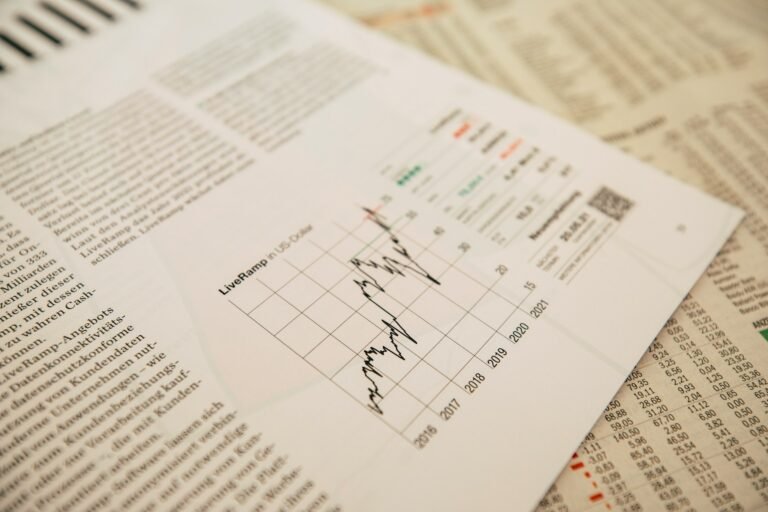In an era defined by rapid technological advancements, shifting consumer behaviors, and global economic uncertainties, market analysis is undergoing a profound transformation. Traditional methods of analyzing markets—relying heavily on historical data and linear projections—are no longer sufficient to navigate the complexities of today’s business landscape. As we look to the future, several emerging trends are poised to redefine how businesses gather, interpret, and act on market insights.
Here are the key trends to watch in the future of market analysis:
Artificial Intelligence and Machine Learning Take Center Stage
Artificial Intelligence (AI) and Machine Learning (ML) are revolutionizing market analysis by enabling businesses to process vast amounts of data at unprecedented speeds. These technologies can identify patterns, predict trends, and uncover insights that would be impossible for humans to detect manually. For example, AI-powered tools can analyze consumer sentiment from social media, predict demand fluctuations, and even recommend pricing strategies in real time. As AI continues to evolve, its ability to provide hyper-personalized and actionable insights will become a cornerstone of market analysis.
The Rise of Predictive and Prescriptive Analytics
While descriptive analytics (what happened) and diagnostic analytics (why it happened) remain important, the future lies in predictive and prescriptive analytics. Predictive analytics uses historical data and machine learning algorithms to forecast future outcomes, such as market trends or customer behavior. Prescriptive analytics goes a step further by recommending specific actions to achieve desired outcomes. For instance, a retailer might use prescriptive analytics to determine the optimal product mix for a specific season or region. These advanced analytical approaches empower businesses to make proactive, data-driven decisions.
Real-Time Data Analysis
In today’s fast-paced world, businesses can no longer afford to rely on outdated information. Real-time data analysis is becoming essential for staying competitive. With the proliferation of IoT devices, social media platforms, and e-commerce transactions, companies now have access to a constant stream of real-time data. Tools like dashboards and live reporting systems allow businesses to monitor market conditions, track competitor activity, and respond to consumer needs instantly. This shift toward real-time insights will only accelerate as technology continues to advance.
Integration of Alternative Data Sources
Traditional market analysis often relies on structured data from sales figures, surveys, and financial reports. However, the future will see a greater emphasis on alternative data sources, such as satellite imagery, geolocation data, and even weather patterns. For example, retailers might use foot traffic data to optimize store locations, while investors could analyze satellite images of parking lots to gauge a company’s performance. By integrating these unconventional data sources, businesses can gain a more comprehensive and nuanced understanding of market dynamics.
Ethical Data Use and Privacy Concerns
As data becomes the lifeblood of market analysis, ethical considerations and privacy concerns are taking center stage. Consumers are increasingly aware of how their data is being collected and used, leading to stricter regulations like GDPR and CCPA. In the future, businesses will need to prioritize transparency, consent, and data security to build trust with their customers. Market analysts will also need to navigate the fine line between leveraging data for insights and respecting individual privacy rights.
Hyper-Personalization and Customer-Centric Insights
The future of market analysis is deeply rooted in understanding the individual consumer. With advancements in data collection and analysis, businesses can now create hyper-personalized experiences tailored to each customer’s preferences, behaviors, and needs. For example, e-commerce platforms can use AI to recommend products based on a user’s browsing history, while streaming services can curate content based on viewing habits. This shift toward customer-centric insights will drive greater customer loyalty and satisfaction.
Collaboration Between Humans and Machines
While AI and automation are transforming market analysis, the human element remains irreplaceable. The future will see a collaborative approach where machines handle data processing and pattern recognition, while humans focus on strategic decision-making and creative problem-solving. Analysts will need to develop new skills, such as interpreting AI-generated insights and asking the right questions to guide machine learning models. This synergy between humans and machines will unlock new levels of innovation and efficiency.
Globalization and Cross-Cultural Market Analysis
As businesses expand into new markets, understanding cultural nuances and regional differences will become increasingly important. Market analysis will need to account for diverse consumer behaviors, regulatory environments, and economic conditions across geographies. Advanced analytics tools will play a crucial role in helping businesses navigate these complexities and identify opportunities in emerging markets.
Sustainability and Social Impact Analysis
Consumers and investors are increasingly prioritizing sustainability and social responsibility. As a result, market analysis will need to incorporate environmental, social, and governance (ESG) factors into its framework. Companies will analyze how their products, services, and operations impact the planet and society, and use these insights to align with consumer values and regulatory requirements. This trend will drive the development of new metrics and analytical models focused on sustainability.
Democratization of Market Analysis Tools
In the past, advanced market analysis tools were accessible only to large corporations with significant resources. However, the future will see a democratization of these tools, making them available to small and medium-sized enterprises (SMEs). Cloud-based platforms, open-source software, and user-friendly analytics tools are leveling the playing field, enabling businesses of all sizes to harness the power of data-driven insights.
Conclusion
The future of market analysis is dynamic, data-driven, and deeply interconnected with technological innovation. Businesses that embrace these trends—whether through AI-powered insights, real-time data analysis, or ethical data practices—will be better equipped to thrive in an increasingly competitive and complex marketplace. As the tools and techniques of market analysis continue to evolve, one thing is clear: the ability to adapt and innovate will be the ultimate determinant of success. By staying ahead of these trends, businesses can unlock new opportunities, mitigate risks, and build a sustainable competitive advantage in the years to come.

